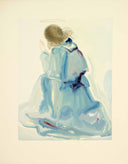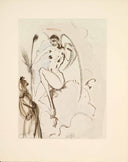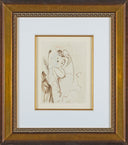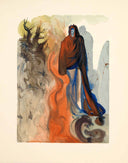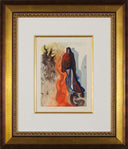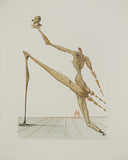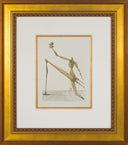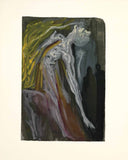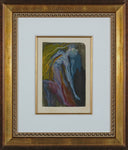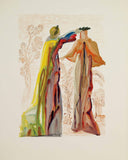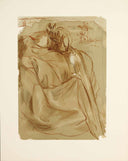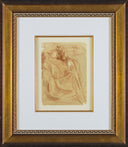About the Artist
Salvador Dalí (1904–1989) was the flamboyant genius of Surrealism, celebrated worldwide for his dazzling imagination, technical brilliance, and unrelenting drive to innovate. While his oil paintings of melting clocks, dreamscapes, and fantastical visions made him a cultural icon, Dalí’s graphic works reveal the full range of his ambition and continue to captivate today’s collectors.
From the 1930s onward, Dalí embraced printmaking as a vehicle for expanding his surrealist universe. His etchings, lithographs, and illustrated suites, including masterworks such as The Divine Comedy, Imaginations and Objects of the Future, and Tristan and Isolde, pushed the boundaries of imagination and technique. These editions allowed Dalí to weave his visions of myth, religion, love, and science into narratives that could be owned, lived with, and passed down by collectors.
Far from being mere reproductions, Dalí’s prints often included hand-finished elements, experimental textures, and dazzling color, demonstrating the same virtuosity and flamboyance that defined his larger-scale works.
In the 21st-century art market, Dalí’s graphic works occupy a unique position: they are accessible yet prestigious, playful yet profound. For modern collectors, they represent both a tangible link to one of art history’s greatest personalities and an enduring investment in the Surrealist vision. Their continued presence in major auctions and exhibitions underscores their vitality, ensuring that Dalí’s dreamscapes remain as compelling now as they were in his lifetime.
Dalí’s graphic works capture not only the surrealist imagination but also the spirit of innovation that resonates with contemporary tastes. In today’s culture of bold storytelling and visual experimentation, Dalí’s prints feel strikingly modern, luxury objects infused with wit, wonder, and timeless allure.






